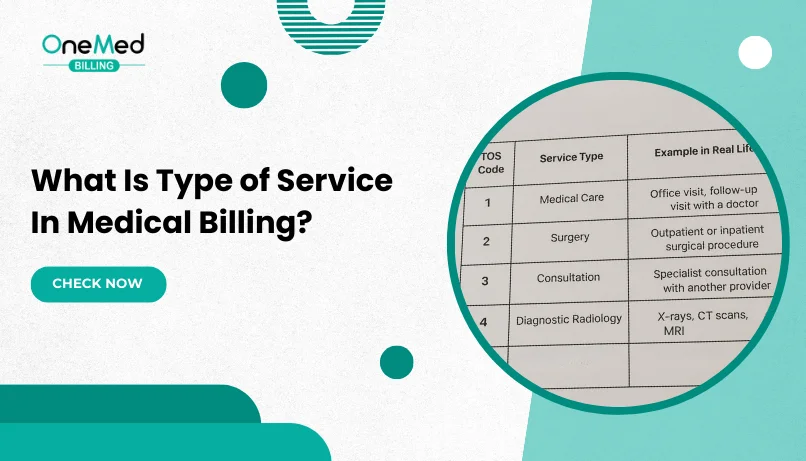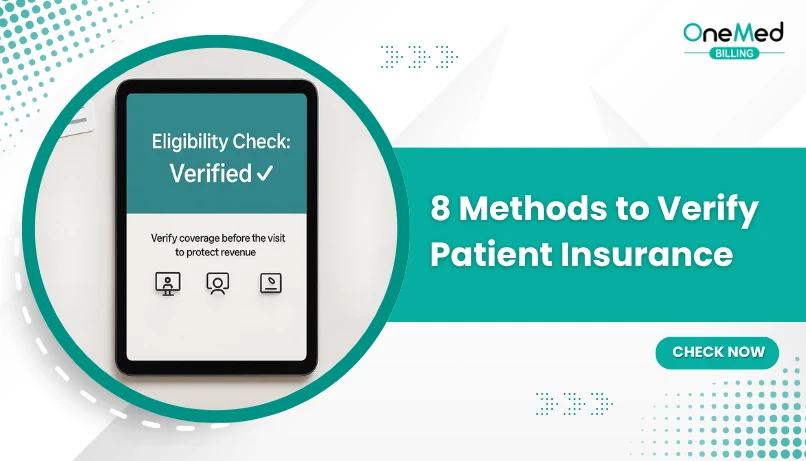6 Must-Know Steps in the Patient Registration Process
- July 29, 2025
- 0 Comments
- Patient Registration
The patient registration process might seem like simple paperwork at first glance, but it’s actually a vital part of the healthcare experience. It sets the stage for accurate billing, timely care, and clear communication between the patient, provider, and insurance company. Whether you're running a small clinic or managing a large hospital, understanding the core steps of this process is key to keeping things running smoothly.
Steps in the Patient Registration Process
Let’s break down the six must-know steps in patient registration.
1. Patient Information Collection
The first step in registration is collecting basic patient details. This is the patient’s first interaction with your front desk team, so it should be welcoming, efficient, and error-free.
At this stage, you’ll gather:
- Full legal name
- Date of birth and gender
- Phone number and email address
- Home address
- Emergency contact details
- Government-issued ID (driver’s license or similar)
- Insurance card(s)
Accuracy is everything. A small spelling mistake or transposed number can cause major issues during insurance billing. For example, if the patient’s name doesn't exactly match the name on their insurance card, the claim could be denied or delayed. Make sure the front desk staff carefully enters every detail into your system, double-checks names and numbers, and scans the documents for future reference.
2. Insurance Verification

After collecting demographic details, the next step is to verify the patient’s insurance. This means confirming that the policy is active and that the patient is eligible for the services you're providing.
Insurance verification includes checking:
- The active status of the insurance plan
- Effective and expiration dates
- The services covered under the plan
- Copay, deductible, and coinsurance amounts
- Whether pre-authorization or referrals are required
- Whether the provider is in-network or out-of-network
Most modern practices use electronic tools or clearinghouses for real-time verification, but it can still take time depending on the payer. Verifying insurance in advance helps avoid claim denials and prevents awkward conversations with patients after the visit about unexpected out-of-pocket costs.
Clear communication is key here. Let patients know ahead of time about any copays or services not covered by their plan. This builds trust and avoids surprises.
3. Eligibility Checks
Eligibility checks go one step further than basic verification. This step confirms whether the specific service or visit type is allowed under the patient’s plan, at the time of the scheduled appointment.
This includes:
- Confirming coverage for the exact procedure or visit type
- Ensuring the provider is considered in-network
- Checking for referral or prior authorization requirements
- Verifying benefits limits (such as annual visit caps or therapy limits)
These checks prevent situations where a patient shows up for a service and later finds out their plan didn’t cover it. Many practices run these checks electronically, using payer portals or EDI systems.
It’s also a good idea to document the results of these checks. If a payer later denies a claim, having proof that eligibility was verified can help in appeals.
4. Medical History and Consent Forms

Once the insurance details are squared away, the next step is collecting the patient’s medical background and securing legal consents.
This includes:
- Medical history (past illnesses, surgeries, allergies, medications)
- Family medical history
- Current health complaints
- HIPAA privacy acknowledgment
- Financial responsibility agreement
- General consent to treat
Some practices provide these forms ahead of time through patient portals, while others complete them at the front desk. Either way, it’s important to make sure they’re filled out completely and accurately before the patient sees the provider.
This information helps the provider deliver better care, and the consent forms protect both the practice and the patient from misunderstandings. Make sure the patient has a chance to ask questions, and confirm that all required forms are signed.
5. Creating or Updating Patient Records
With all data collected, the registration team now builds or updates the patient’s file in the electronic health record (EHR) system.
This process includes:
- Creating a new patient profile or updating an existing one
- Uploading ID, insurance cards, and signed forms
- Entering all demographic and insurance data
- Logging medical history notes or alerts
- Adding special instructions or flags (such as interpreter needs or mobility issues)
For returning patients, make sure to confirm if any details have changed. A new insurance card, address, or phone number should be updated right away to keep records clean.
Accurate records help everyone — from billing teams submitting claims, to doctors reviewing the patient’s past visits. Even a small mistake here can affect future care and payment.
6. Appointment Scheduling and Final Review

Finally, it’s time to confirm the appointment and review all the information.
This includes:
- Confirming the date, time, and provider
- Verifying the service requested
- Letting the patient know about any special prep (fasting, documents to bring, etc.)
- Explaining payment expectations (co-pay, deposit, etc.)
- Sending appointment reminders by text, email, or phone
This last step ties everything together. A clear, helpful scheduling process reduces no-shows and helps patients feel prepared. It also gives your staff one last opportunity to catch any missing or incorrect information before the visit.
Why Is This Process So Important?
Patient registration is more than just a front desk task. It sets the tone for the entire visit and plays a big role in whether or not your claims are paid smoothly.
A solid registration process:
- Prevents claim rejections and denials
- Reduces billing delays
- Improves patient satisfaction and trust
- Keeps your practice in compliance with HIPAA and billing rules
- Saves time for your team during and after the visit
When you get registration right, everything else flows better, from check-in to billing to follow-up care.
Conclusion
The patient registration process doesn’t have to be stressful. With the right training, tools, and attention to detail, your team can make it a smooth and supportive experience for every patient who walks through your door.
Remember, it’s not just about filling out forms. It’s about creating a strong foundation for care, communication, and trust. Many healthcare practices choose to outsource patient registration services to ensure accuracy, efficiency, and a better experience for both staff and patients.
Frequently Asked Questions
Find quick answers to common questions about this topic, explained simply and clearly.
What is the patient registration process?
The patient registration process is the first step in the revenue cycle, where a patient’s personal, insurance, and medical information is collected before receiving care. It ensures that claims are submitted accurately and payments are received
What does the patient registration process capture?
It captures key details such as patient demographics, insurance information, contact details, medical history, and consent forms. This data helps verify eligibility, confirm coverage, and prevent claim errors.
Who is responsible for patient registration?
Front desk or registration staff are responsible for collecting and verifying patient information during check-in. In larger practices, dedicated registration teams or coordinators handle this step to ensure accuracy and compliance.
What is the importance of patient registration?
Patient registration is vital because it sets the foundation for clean claim submission and accurate billing. Proper registration helps avoid denials, reduces rework, and ensures patients are billed correctly for the care they receive.







Comments (0)